Description
menurr wununmurra
Gunga (Pandanus Spiralis) and Balgurr (Kurrajong – Brachychiton Populneus) and natural dyes
Weave: 70cm Fringe: 130cm
Year: 2024
ID: 979-24
Ŋaṉmarra
Circular and conical woven mats were a mainstay of Yolŋu family life in pre-contact times. As well as being used in ceremonial contexts they were useful for sitting, sleeping and child minding. Close weaved conical mats kept mosquitoes at bay in the Wet. In ceremonial song, the mat can correlate to the creation of life including the sun as the ultimate source of all life. The name of this form of mat is Ŋaṉmarra and also refers to the sunfish.
As told by weaving artist Wopurruwuy Gondarra, weaving is like a cycle and it connects to the djälkirri, the foundation of Yolŋu knowledge. She describes the meaning of djälkirri as a campus, like a Yolŋu institute that holds all knowledge. The Ŋaṉmarra is of significance, not only because of its beautiful colours, lines, and patterns. There is a story behind it that holds deep women’s knowledge. It is a symbol of the cyclical learning process of life: “It represents how the Yothu (children) are growing”. Wopurruwuy says the learning starts at the age of five and there are different ceremonies for miyalk (girls and women) and dhirramu (boys and men). “We learn from our great great great Grandmothers and – Fathers, from our Ŋäṉḏi (Mothers) and Märi (one type of Grandmothers). The djälkirri is the foundation, where we stay, remain, in our culture.” When the girls become woman, have partners and children, that’s when the learning is passed on, when the teaching starts. The djälkirri is taught through going hunting, through Buŋgul (dance), ceremonies, and djäma (work) – like weaving. She says she learned how to weave by watching her Grandmother, her Mother and later her Mother-in-law. Through her, she learned the deep knowledge behind the weaving, “she taught me everything. She took me through this learning process. She taught me how to weave and whats the story for the women behind it. (…)
Ŋaṉmarra is like a wäŋa (place), like a birthing place, where new things come, (…), a new experience. A holy ground.”
Wopurruwuy describes the practice of weaving as her passion where she finds a space of relaxation. “It’s not just weaving djäma (work) but at the same time you are meditating. Your spirit connects to the land, to the nature, everything that exists. The creation. It starts to come up and you start to reflect back to where you first heard that story of your ancestors.”
The age old practice of weaving mats from the leaves of pandanus continues today. Making fibre works is very labour intensive. Gathering the materials can be quite exhausting. The spiky pandanus leaves are sometimes difficult to harvest, followed by the careful task of flaying the leaves before hanging them to dry. Only the few central leaves of the palm growing from the core which have not bent are used. These can be ten or twenty feet high so a special crook known as a Galpuŋaniny must be used to work these out of the growing tree. The pandanus (known as Gunga- Pandanus Yirrkalaensis) recovers completely but cannot be harvested again for some months. The dyes used are from the bulbs, roots or bark of various woodland plants. Each of these plants only grow in different specific locations. Once the material is collected, trimmed, dried and dyed the weaving begins. This is almost always done by women in groups. Men have been known to weave ceremonial or sacred objects but these are not for sale. Some of the plants used for dyeing are Yiriŋaniny, which is a small grass like plant with a red bulb under the ground, Burukpili (Cheesefruit/Noni) or Djunum, whose root gives a yellow dye. These and others are used with various catalysts like the ash from particular plants to create endless variations of colour. It is said that the practice of dyeing rather than painting fibrework with ochres is a practice that spread from the West but no time is specified.

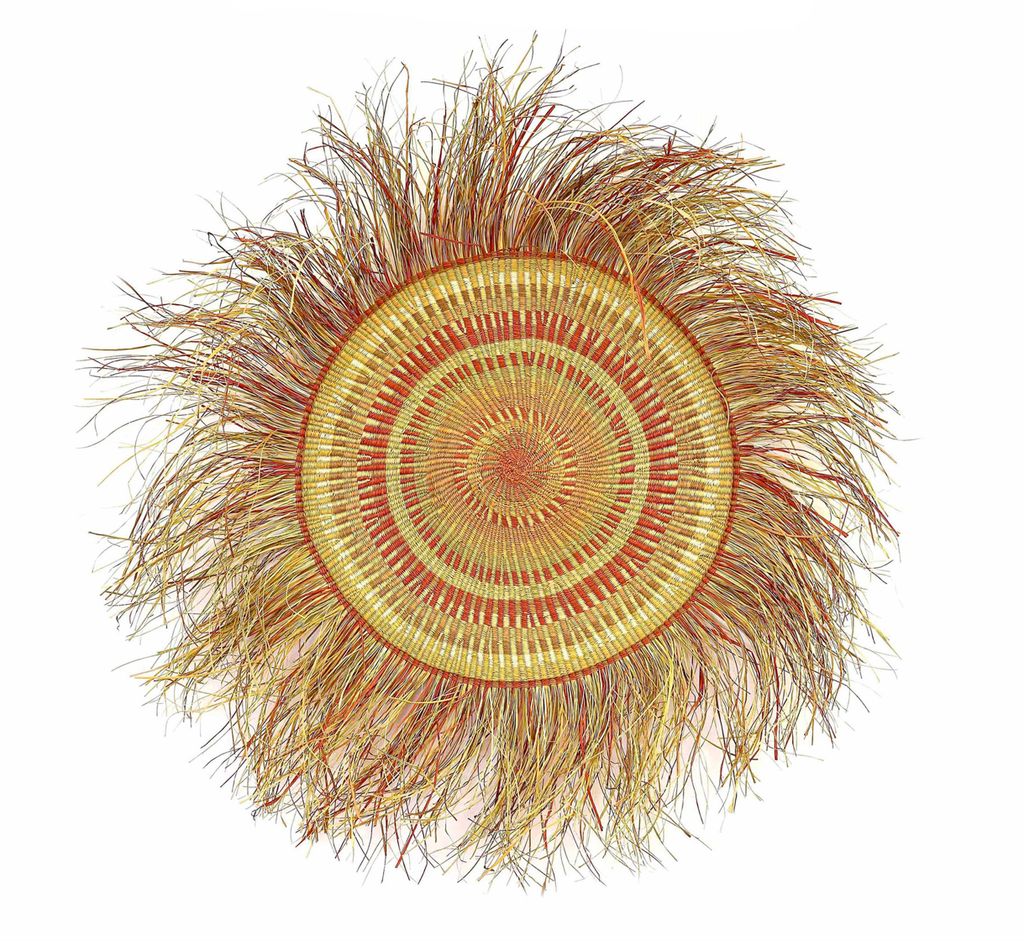
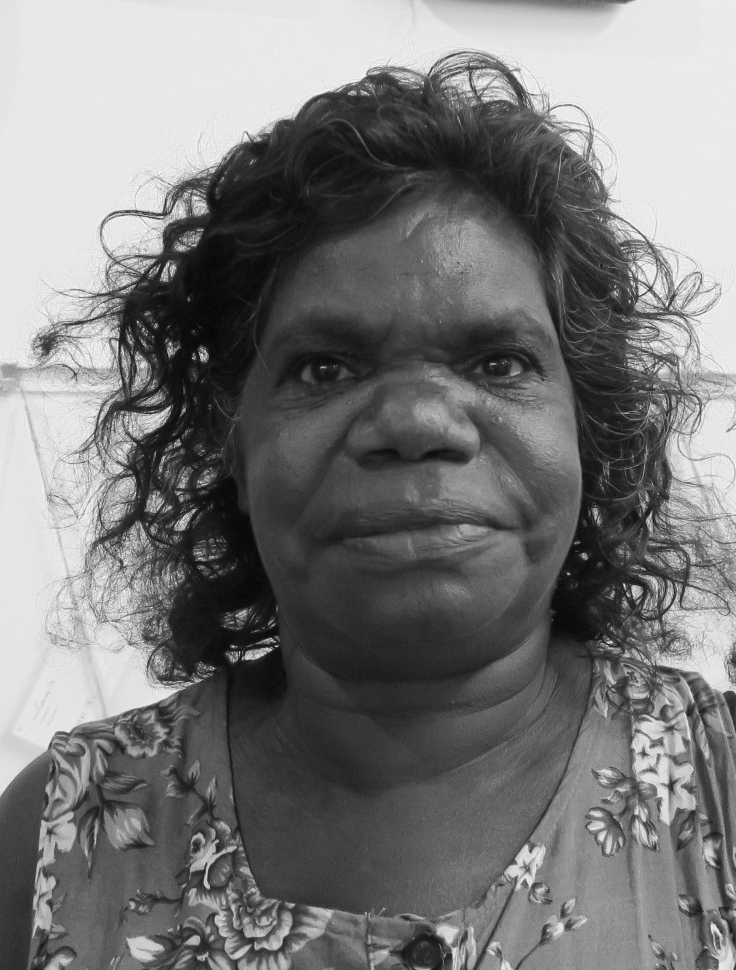
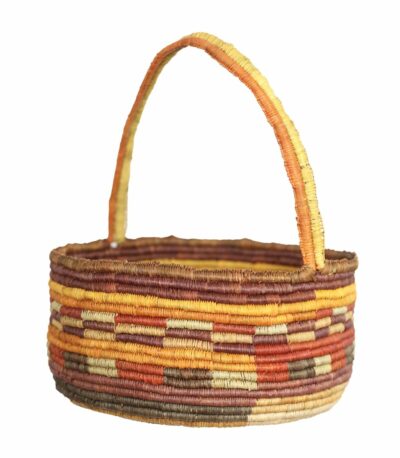
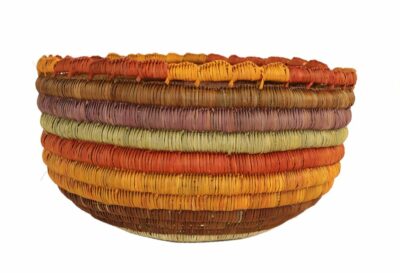
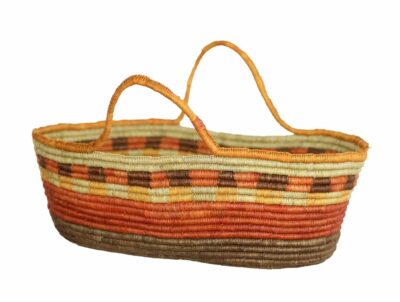
Reviews
There are no reviews yet.